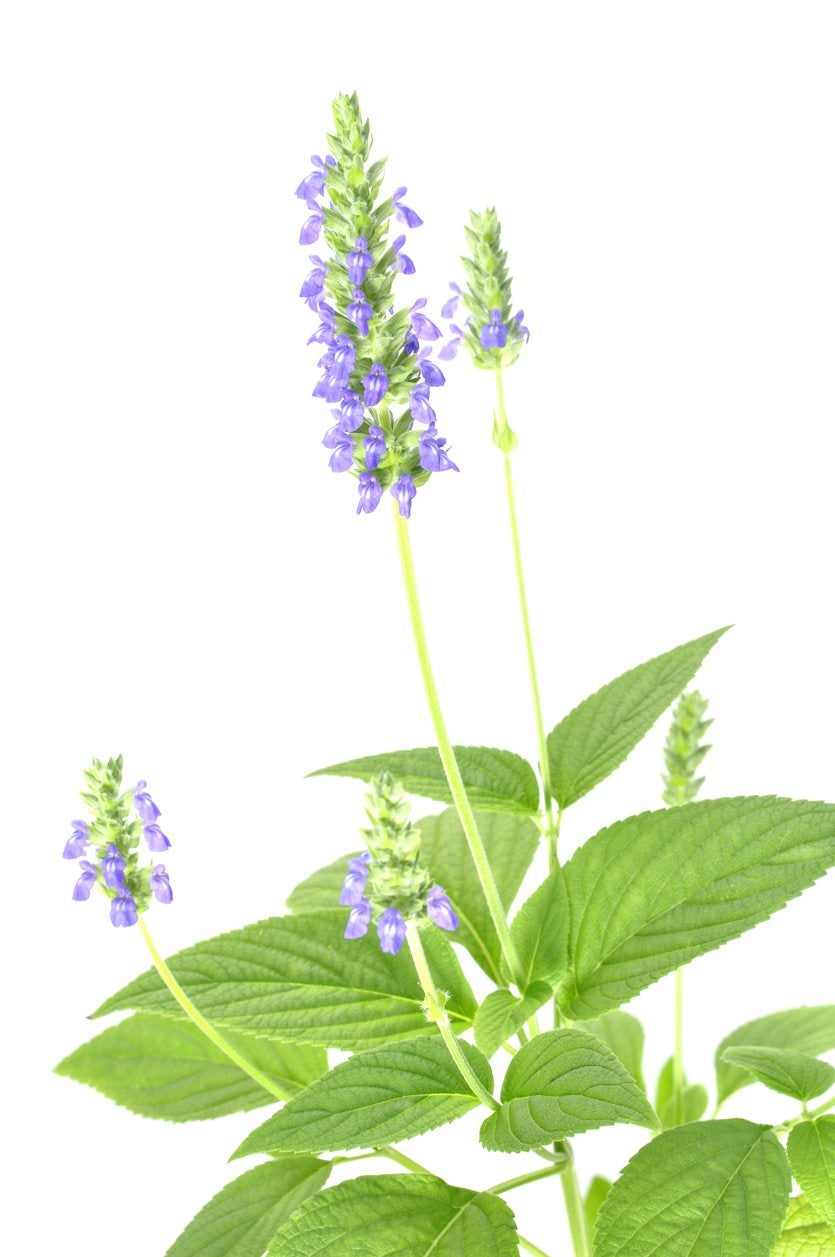Chia Plant Care: Learn How To Grow Chia Seeds In The Garden

Once the hair on a novelty toy, chia seeds are making a comeback, but this time, they're taking up residence in the garden and the kitchen. Aztec and Mayan warriors in old Mexico recognized chia seeds as a valuable source of energy and stamina; in fact, the Mayan name for chia means "strength." With this chia plant information, you can learn how to grow chia seeds for all their health benefits.
What is a Chia Plant?
Chia (Salvia hispanica) is a member of the Lamiaceae, or mint, family. Adding chia to your plantings provides a valuable nectar source for bees and butterflies. These herbaceous hardy annuals grow to 3 feet tall (91 cm.). They have thick, dark green leaves that are wrinkled and deeply lobed. Tiny, soft, gray hairs cover the upper side of the leaves as well. The chia plant has several stems rising from the plant's base. In the late spring and early summer, each stem holds up spikes of small blue, tube-shaped flowers. The blooms have three lobes on one lip, with a white tip on the lower lip. Burgundy, spiny-tipped bracts surround the flower whorls and each set of flowers produces a seed head of tiny gray or brown seeds. The seed heads look a lot like those of wheat plants.
How to Grow Chia Seeds
Growing chia plants is simple provided you stick with optimal chia plant growing conditions. They are hardy in USDA zones 8 through 11. Choose a spot that receives full sun and has good drainage. In the fall, prepare the soil as you would for other plants, breaking it up and amending it as needed. Scatter the tiny seeds over the surface of the soil and then rake the earth over them carefully. Water them lightly until the plants are growing strongly. Chia plant care is uncomplicated. The desert plant is not only drought tolerant, it is known as a "fire following" plant, meaning that it is one of the first to reappear after a devastating wildfire. Once the plants have established themselves in well-drained soil, simply water them only infrequently. Remarkably adaptable, chia plants can even self-pollinate if the bees or butterflies don't take care of the task, and they will self-sow the following autumn, assuming they survive the depredations of birds, insects, and animals. Once the canopy of the chia plants grows over, there is no need for added weed control. Having no known vulnerabilities to pests or diseases makes chia plant care especially simple.
Are Chia Seeds Edible?
Not only are chia seeds edible, they are a rich source of many nutrients. They are high in protein, antioxidants, fiber, and omega-3 fatty acids. They offer five times the calcium available from milk, and the enzymes in the seeds may aid digestion. Researchers believe that chia seeds have an important role in diabetes treatment. Chia seeds may also help to lower triglycerides, blood pressure, and cholesterol. Use the seeds in baking or add a light crunch with a sprinkle of them over salads, casseroles, or vegetable dishes. Chia sprouts are also delicious additions to salad greens. Adding chia plants to your garden is a triple winner: they are easy to grow, they add a pop of blue color, and they have numerous health benefits.
Gardening tips, videos, info and more delivered right to your inbox!
Sign up for the Gardening Know How newsletter today and receive a free copy of our e-book "How to Grow Delicious Tomatoes".
-
 Terrifically Tubular Flowers For Hummingbirds: 9 Tube-Flowered Plants To Attract Hummers
Terrifically Tubular Flowers For Hummingbirds: 9 Tube-Flowered Plants To Attract HummersGrowing tubular flowers for hummingbirds helps you create the optimum feeding conditions for your winged friends. Here are nine tubed delights for hummers
By Tonya Barnett
-
 How To Grow Hydroponic Tomatoes For Fresh Indoor Harvests – No Soil Required
How To Grow Hydroponic Tomatoes For Fresh Indoor Harvests – No Soil RequiredLearning how to grow tomatoes in water is easy and allows you to harvest fresh-home-grown produce in every season without any mess.
By Ellen Wells